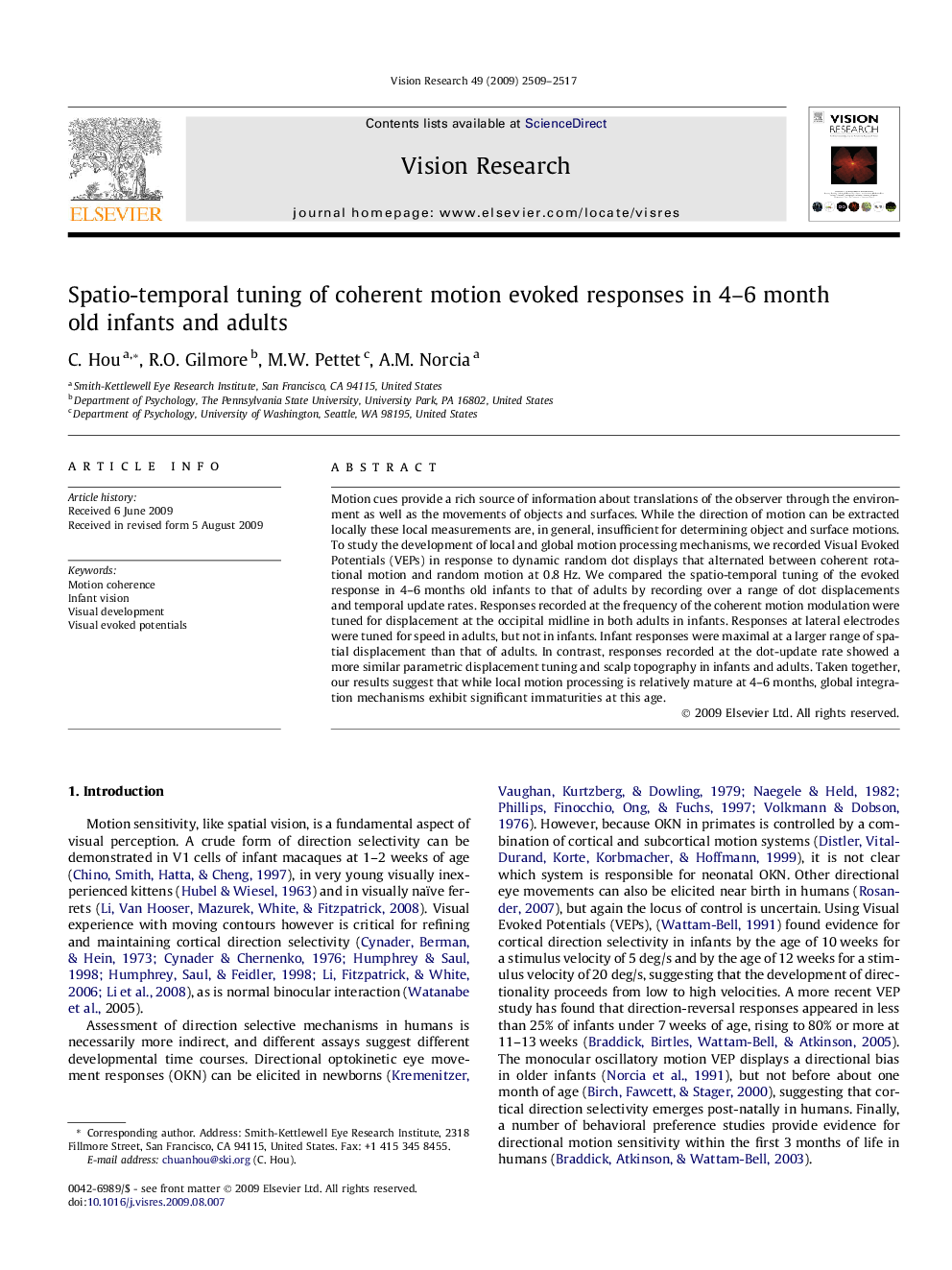| Article ID | Journal | Published Year | Pages | File Type |
|---|---|---|---|---|
| 4034678 | Vision Research | 2009 | 9 Pages |
Motion cues provide a rich source of information about translations of the observer through the environment as well as the movements of objects and surfaces. While the direction of motion can be extracted locally these local measurements are, in general, insufficient for determining object and surface motions. To study the development of local and global motion processing mechanisms, we recorded Visual Evoked Potentials (VEPs) in response to dynamic random dot displays that alternated between coherent rotational motion and random motion at 0.8 Hz. We compared the spatio-temporal tuning of the evoked response in 4–6 months old infants to that of adults by recording over a range of dot displacements and temporal update rates. Responses recorded at the frequency of the coherent motion modulation were tuned for displacement at the occipital midline in both adults in infants. Responses at lateral electrodes were tuned for speed in adults, but not in infants. Infant responses were maximal at a larger range of spatial displacement than that of adults. In contrast, responses recorded at the dot-update rate showed a more similar parametric displacement tuning and scalp topography in infants and adults. Taken together, our results suggest that while local motion processing is relatively mature at 4–6 months, global integration mechanisms exhibit significant immaturities at this age.
